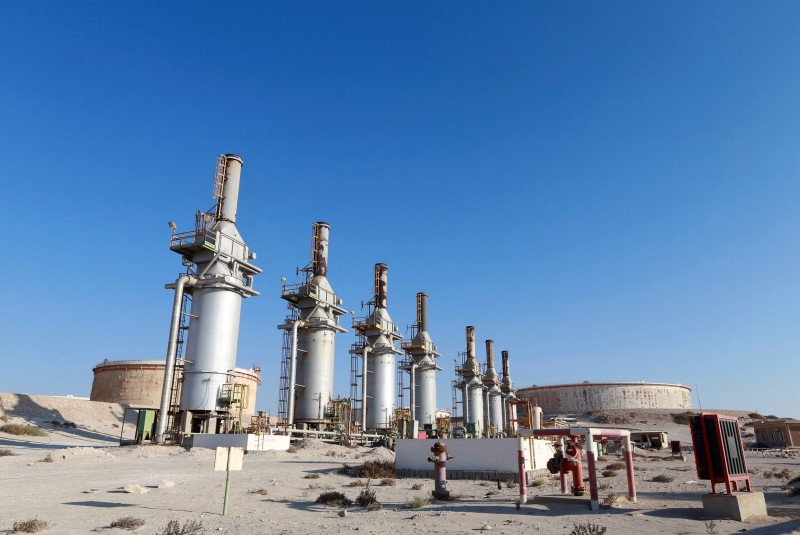By Karolin Schaps
LONDON (Reuters) - Oil prices fell more than 1 percent on Friday as news of rising Iranian exports and returning supplies from Libya and Nigeria following interruptions fuelled concerns that the global glut will persist.
Benchmark Brent crude futures (LCOc1) fell below the $46-a-barrel mark, trading down 1.4 percent at $45.95 a barrel, down 64 cents day on day, at 0825 GMT.
U.S. West Texas Intermediate futures (CLc1) were down 55 cents, of 1.25 percent, at $43.36 a barrel.
Both contracts have fallen 8-9 percent in just one week, underlining how volatile the oil market currently is.
"We've seen a lot of bearish news this week: Libya, Nigeria, sceptical monthly reports from the IEA and OPEC and large stockbuilding in the U.S., so weak fundamentals are weighing on the market," said Frank Klumpp, oil analyst at Stuttgart-based Landesbank Baden-Wuerttemberg.
Iran is nearing its pre-sanctions crude oil export levels after a source familiar with the country's tanker loading schedules said the third-biggest OPEC producer had raised exports to more than 2 million barrels per day (bpd) in August.
Iran's August crude exports, excluding condensate, roughly doubled from a year ago to 2.11 million bpd, the source said, based on data compiled from tanker loading schedules.
Rising Iranian exports are coupled with a return in Nigerian and Libyan output, two countries whose crude exports have been hampered by conflict and unrest.
Libya is resuming oil exports from some of its main ports and has lifted related force majeure contractual clauses, the National Oil Corporation (NOC) said.
"Exports will resume immediately from Zueitina and Ras Lanuf, and will continue at Brega ... exports will resume from Es Sider as soon as possible," NOC Chairman Mustafa Sanalla said.
In Nigeria, ExxonMobil (NYSE:XOM) was making preparations to load a cargo of Qua Iboe crude at the end of September, trading sources said, its first since it imposed force majeure in July.
Traders were also eyeing weekly U.S. rig count data, to be released by Baker Hughes later on Friday.
Last week's data showed U.S. drillers had added seven oil rigs in the week to Sept. 9, bringing the total rig count to 414, the most since February.
"The focus will turn to drilling activity in the U.S., with another rise expected to raise concerns about a recovery in U.S. output," Australian bank ANZ said in a note.

The level of U.S. production is seen as key to market balancing as since 2010 the U.S. has witnessed more growth in daily output than any other major producer thanks to the boom in shale oil production but is never likely to join any group effort to control supplies.